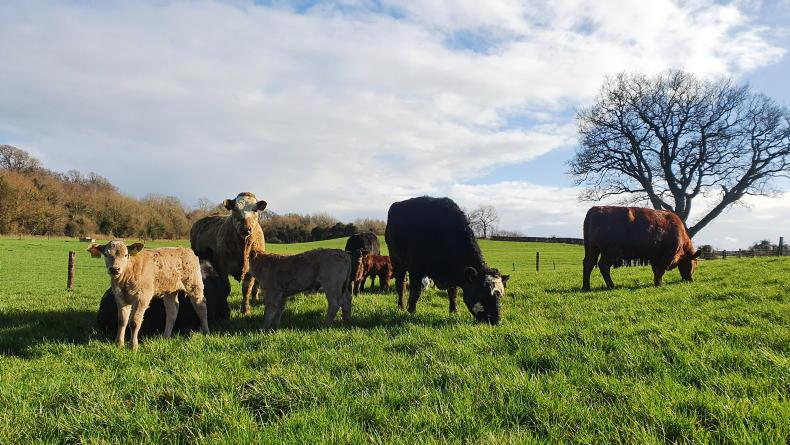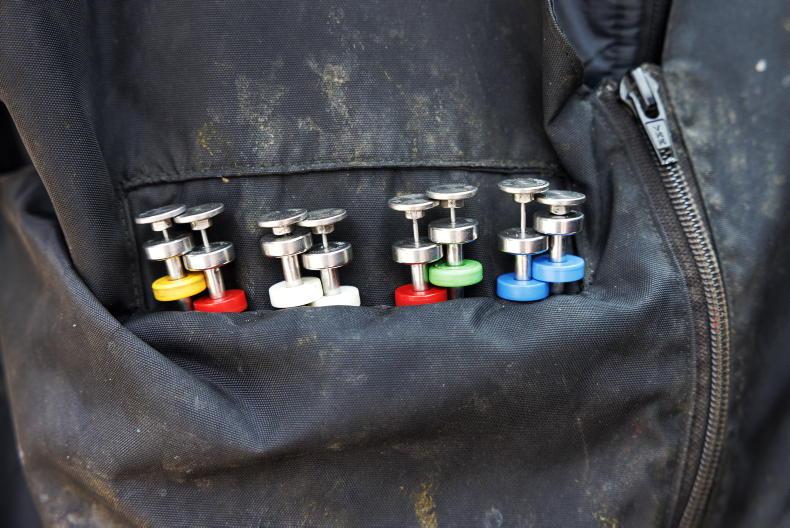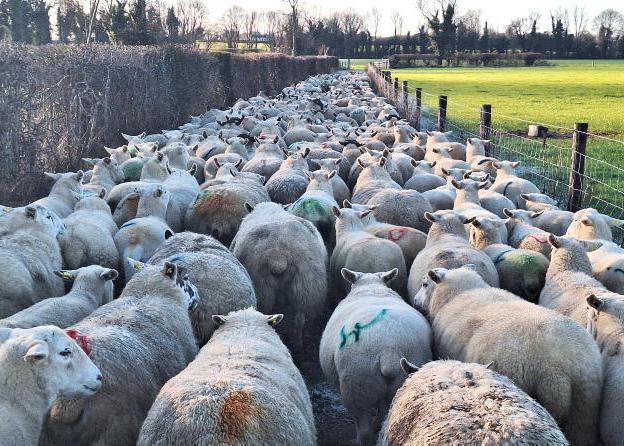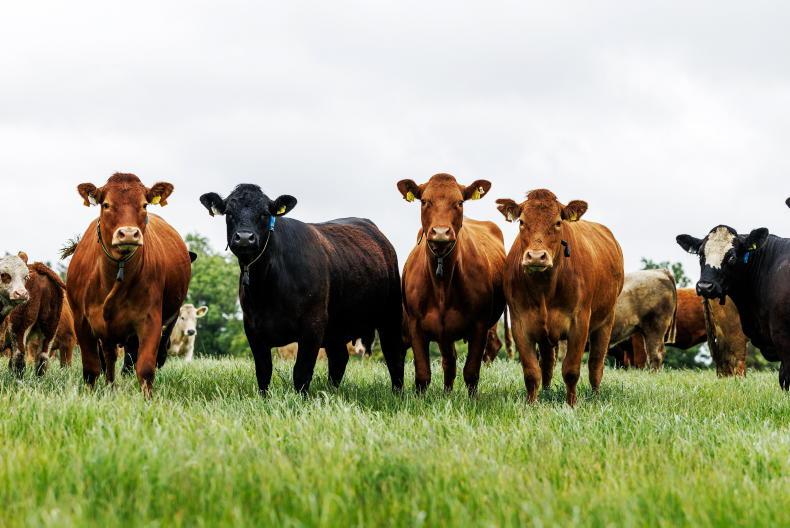On Tuesday evening, Tullamore Farm virtually opened its gates once again, this time looking at the breeding programme of the suckler herd on the farm.
Irish Farmers Journal suckler and beef editor Adam Woods and farm manager Shaun Diver discussed all aspects of breeding on the farm, including the overall breeding aim of Tullamore Farm.
Currently, the farm operates a 90-cow spring-calving system using high maternal index bulls to produce replacement heifers for sale each year. Male calves are finished as bulls in an under-16-month system.
Cow type
The cow type on farm was initially a first-cross off the dairy herd. However, as the years progress, more and more of the breeding stock are now a second beef-cross off these cows.
Describing what he looks for in a cow, Shaun said: “First of all, a suckler cow needs to have sufficient milk. This drives on the growth rate of the calf and is a must.
"She needs to be medium size, around 680kg to 750kg and have a good calving ability. She then needs to produce a heavy weanling year on year that is of high quality."
Herd breeding performance
The herd is currently within the top 3% of the country in terms of overall maternal index figures.
The current calving interval sits at 357 days, the farm is producing 1.01 live calves/cow each year, 75% of the herd calves within the first six weeks and they are consistently achieving an empty rate of below 10% in a 10-week breeding period.
AI v stock bull
Always a topic of great debate, Shaun says there is a role for both, and currently uses both on Tullamore Farm.
The first six weeks of the breeding season is all AI and Shaun says that around 90% of the herd is mated to AI in this time frame.
The benefits of using AI is that it gives the herd access to the best genetics available in the country and each cow can be matched with a bull that will compliment her attributes or improve certain aspects in the next generation.
A Salers stock bull is then turned out with the cows for the final four weeks of the breeding season.
Shaun says that this really comes down to labour. Running 90 cows and over 200 ewes means that there is always more jobs to be done with stock.
The bull allows Shaun time to get these tasks done without worrying about heat detection and getting cows in for breeding.
High maternal bulls
While the farm concentrates on high maternal genetic bulls, Adam stressed that they are also keeping an eye on the terminal traits.
He said they are looking for bulls that can deliver on both aspects and that the added bonus of AI is that they can pick a bull with a higher carcase figure for cows that need to be improved on the terminal side of things.
Calving ease is closely monitored when selecting bulls and typically they never select a bull with a cow calving difficulty figure of greater than 8%.
24-month calving
Adam Woods said that this is an area that, as an industry, we must do better.
Tullamore Farm is successfully calving down all heifers at 24 months without a problem and cows are lasting in the system.
He said that hitting growth targets is a must if you want to calve down at 24 months and that the first winter period is where most farms fall behind.
On Tullamore Farm, heifers spend the first winter on the best-quality silage available in the yard, typically between 72 and 75 DMD alongside a low level of concentrate feeding (1.5kg to 2kg/day).
This sees heifers grow at around 0.7kg to 0.8kg/day over the winter period.
While the beginning of the breeding season is currently a month away, Shaun said that the lightest heifer at breeding will be 380kg, while the average will be up around 420kg.
The future
The future direction for Tullamore Farm is yet to be determined, with a number of systems currently being considered.
The current cost of concentrates going into the bull system, alongside what seems to be a reduced demand for bull beef, is making continuing with bulls on the farm more difficult.
Adam said that the bulls are the most efficient animal in terms of converting feed to protein and would be slow to move away from them, as there currently is not a enough of a premium for Irish farmers to produce steer beef.
He said in a time where farmers are constantly being told to become more efficient, here we are as an industry turning away from the most efficient animal available to us.
Systems currently being considered include steer systems, weanling systems, sexed semen usage to produce all replacement heifers and organics, as well as a combination of some of the above.
In the next few weeks, the future system will be decided.
Tune in to the next Tullamore Farm webinar on Tuesday 27 April at 8.30pm on www.farmersjournal.ie where the focus will be on grassland management.










SHARING OPTIONS